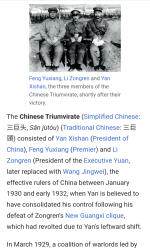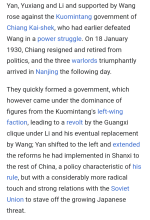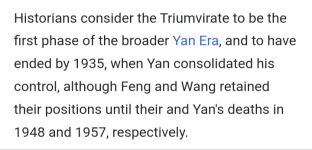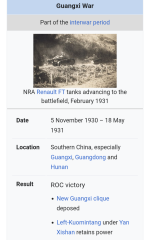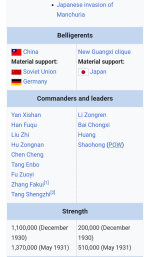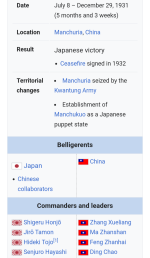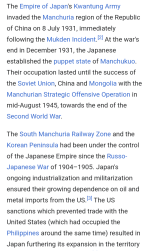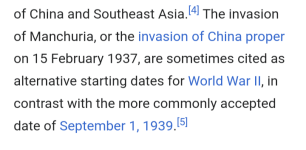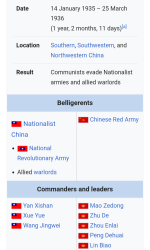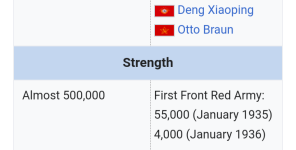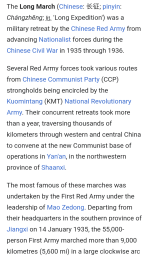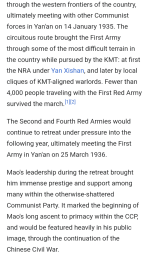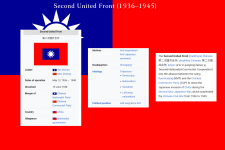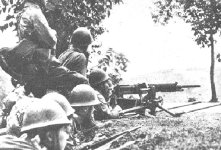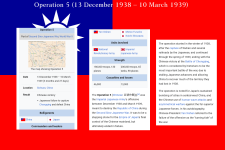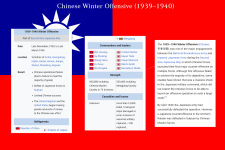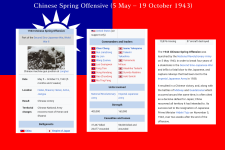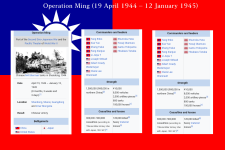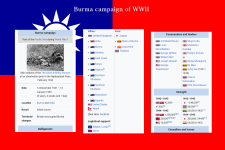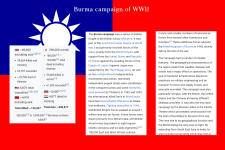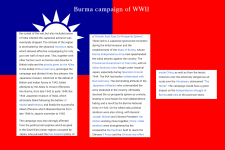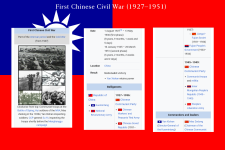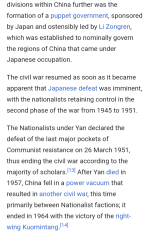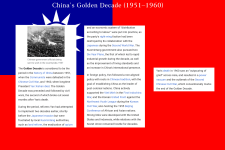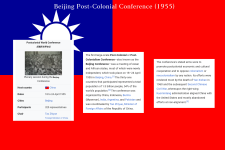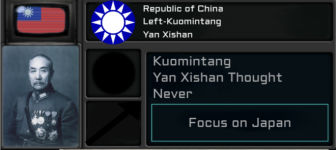NotDavidSoslan
Active member
The forces of the anti-Chiang coalition sought to coordinate their efforts as much as possible, as shown by their capitalisation on their November 1930 victory in Gansu, which destroyed any chance of the Chiang loyalists winning.
After the Fengtian Clique turned against Chiang due to Zhang Xueliang being offered continued control of Manchuria, the Soviet Union dropped its nominal support for the KMT and returned to providing weapons and advisors to the Kuomintang leftists led by Wang Jingwei and the Yuxiang loyalists.
By 18 January 1930, warlord forces were at the outskirts of Nanjing, with their artillery, some of which produced at the Shanxi clique's Taiyuan factory, increasingly bombarding the city. As 60,000 NRA soldiers led by Han Fuqu faced 97,000 warlord ones, Chiang resigned and resumed life as a private citizen; Yan, Feng and Li arrived in the city the following day, and formed a triumvirate with Yan as President, Feng as Premier and Li as President of the Executive Yuan.
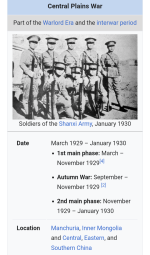
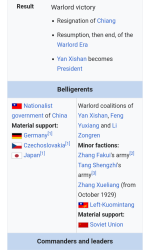
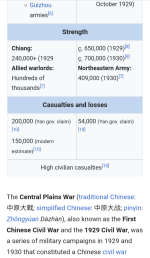
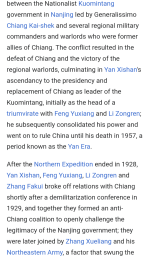
After the Fengtian Clique turned against Chiang due to Zhang Xueliang being offered continued control of Manchuria, the Soviet Union dropped its nominal support for the KMT and returned to providing weapons and advisors to the Kuomintang leftists led by Wang Jingwei and the Yuxiang loyalists.
By 18 January 1930, warlord forces were at the outskirts of Nanjing, with their artillery, some of which produced at the Shanxi clique's Taiyuan factory, increasingly bombarding the city. As 60,000 NRA soldiers led by Han Fuqu faced 97,000 warlord ones, Chiang resigned and resumed life as a private citizen; Yan, Feng and Li arrived in the city the following day, and formed a triumvirate with Yan as President, Feng as Premier and Li as President of the Executive Yuan.







